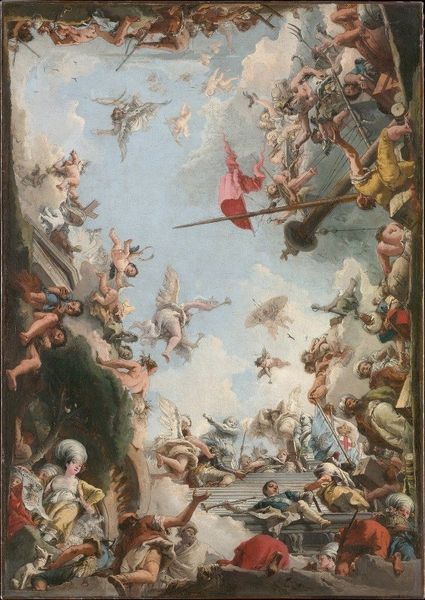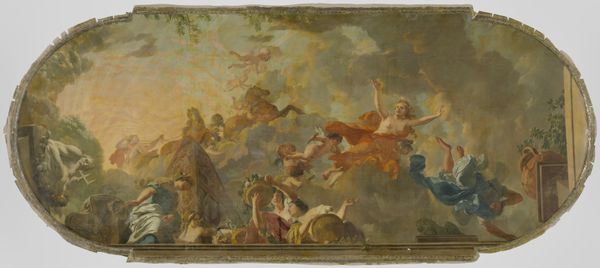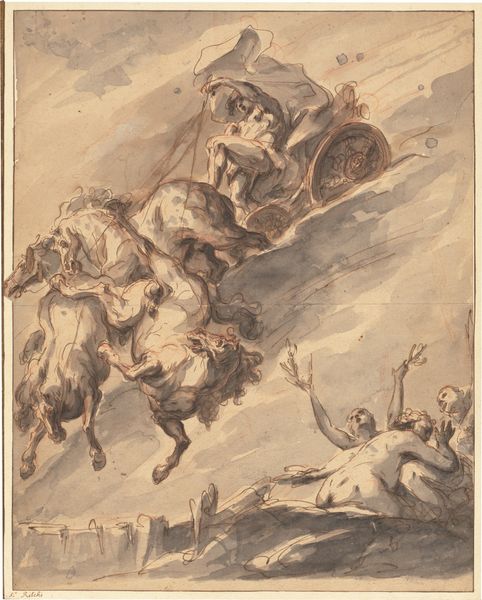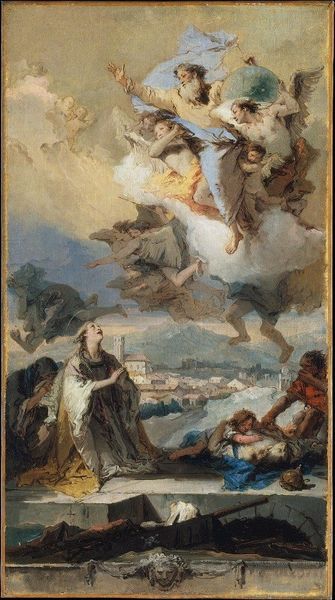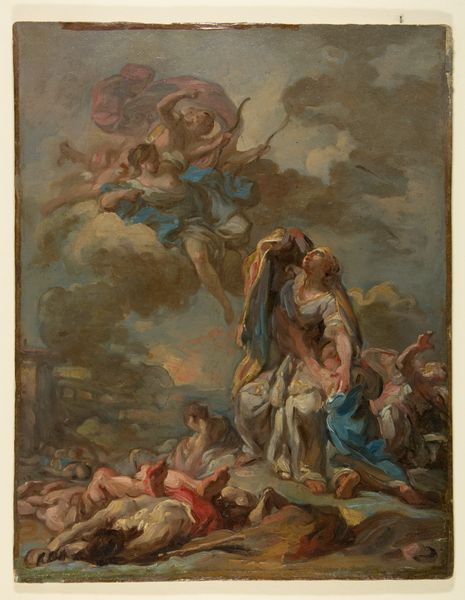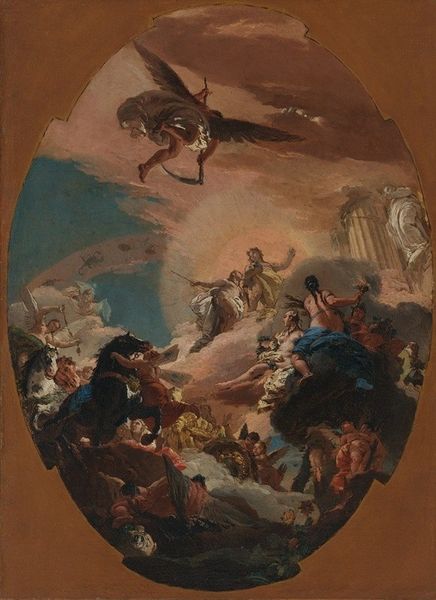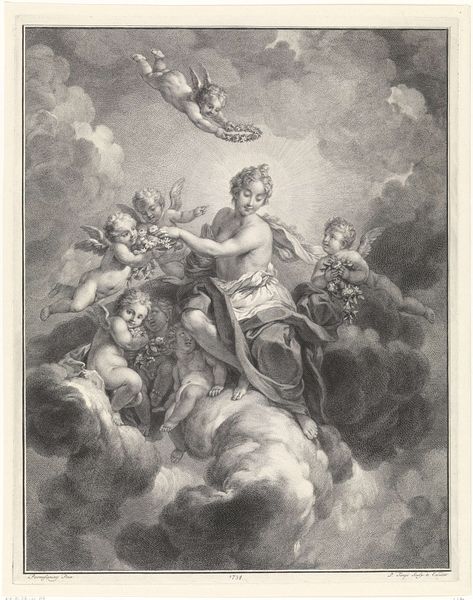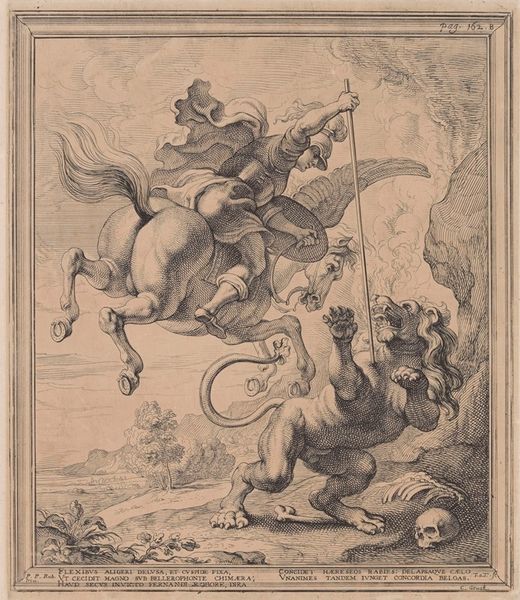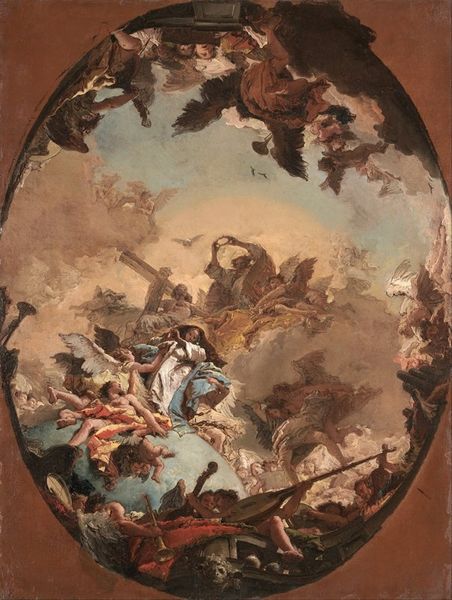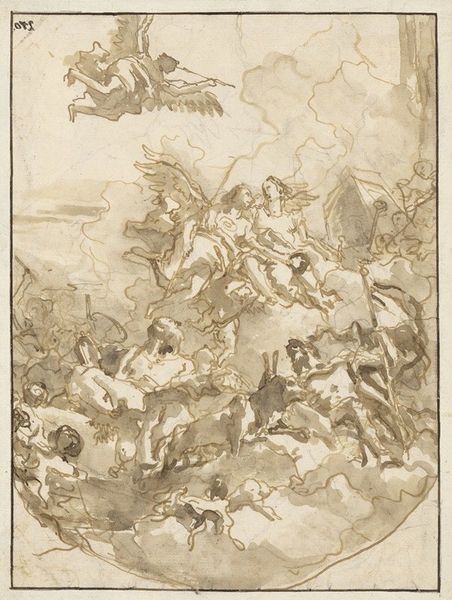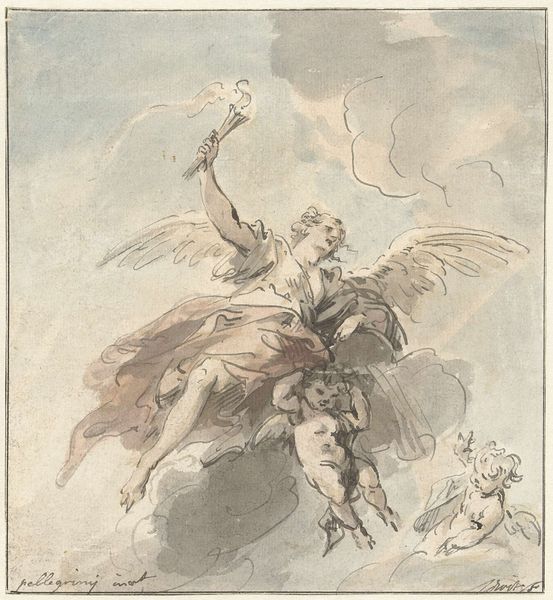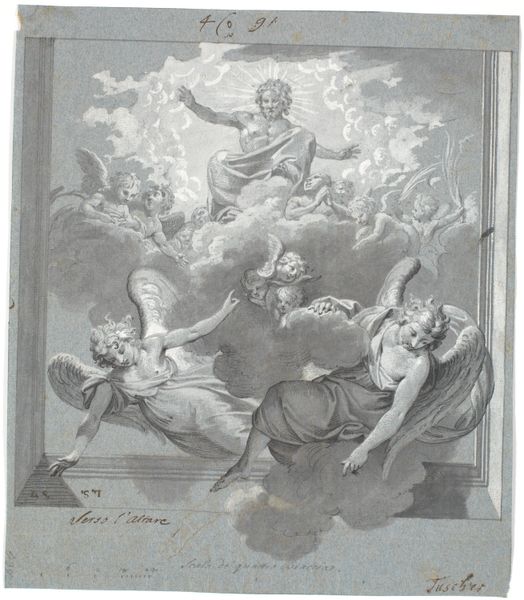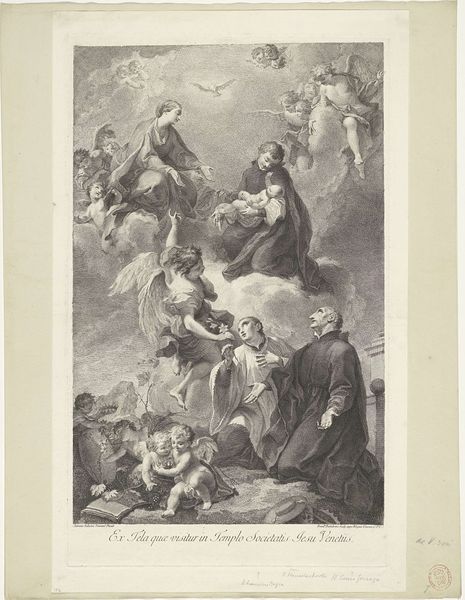
Copyright: Public Domain: Artvee
Curator: The apotheosis of a Pope and martyr by Giovanni Domenico Tiepolo, circa 1780-1785. I notice how bright and open the watercolor medium feels in depicting this ascending figure surrounded by angels. Editor: The upward surge really hits you, doesn’t it? All those figures caught mid-motion against that airy, cloud-filled backdrop, very rococo. It gives an immediate impression of lightness, joy and...perhaps the rather idealized nature of ascension narratives? Curator: Absolutely, and to unpack that narrative, the glorification, let's consider the moment. Apotheosis. Not just death, but elevation to divine status. Tiepolo, working in a time of massive upheaval in political power, invites us to question, who *deserves* this ultimate form of institutional sanctification, and what's erased in the process of creating such figures? Editor: A keen point. Tiepolo the Younger, in this piece, stands within the powerful shadow cast by his father, the great Giovanni Battista Tiepolo, both deeply entwined with aristocratic and ecclesiastical patronage. Knowing the family business provides insight into the artwork itself; into the role art played in constructing power and belief at that moment. How did these artworks function in their original settings, who commissioned them, and what messages were they meant to convey to the public? Curator: It's crucial to examine the iconography, not just as religious symbol but as an assertion of cultural and religious authority. The representation of whiteness, maleness, holiness as a convergence of supreme authority leaves room for examining contemporary intersections of social power, in what historical and symbolic context the Catholic church operates. Editor: Exactly! The selection, the narrative, the visual language - all are tools that legitimized specific figures and belief systems at the expense of others. This helps us think critically about the very notion of apotheosis as a politically charged concept. Tiepolo inherited and evolved the family workshop's stylistic approaches to those specific political statements that continued to resonate with audiences invested in its legacy. Curator: So, we circle back to form, knowing that in Tiepolo's moment, the form is political in and of itself. What narratives were explicitly and implicitly allowed into art history? And whose apotheosis remains yet unpainted? Editor: And, how the legacy of artistic lineages like Tiepolo’s shapes not only our historical understanding but also the continuous discourse around art and power in our own era. It all adds more dimensions than those ethereal watercolour washes let on.
Comments
No comments
Be the first to comment and join the conversation on the ultimate creative platform.
